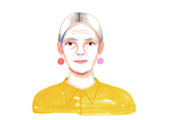Oh, to be young! For as long as people have grown old, they’ve romanticized youth. For as long as elders have given advice, they’ve urged the young not to squander their salad days.
Early adulthood is often painted as a time filled with exploration and self-actualization. It’s purported to be a precious slice of existence devoted to probing possibilities and discovering ourselves. Yet, many young folks are finding that the glory days don’t feel all that glorious.
In 2019, mental illness was most prevalent among Americans aged 18-25. This data suggests that people in the life-building phase aren’t wide-eyed, bounding through open doors; they’re frustrated and anxious. So much so that psychologists, writers, and journalists have devoted serious time and study to what they call the quarter-life crisis.
What does a quarter-life crisis look like?
Simply put, a quarter-life crisis is a prolonged period of anxiety some adults experience that arises out of concerns about identity, career uncertainty, and, broadly speaking, the future. These episodes of stress surrounding developmental difficulties impact 18-30 year-olds as they encounter the myriad challenges that come with picking a path and finding stability in the world they’ve been handed.
The term is thought to have been coined by psychologist Abby Wilner, who co-authored a book on the subject in 2001. If you’re thinking this sounds pretty recent, you’re right; the concept of a quarter-life crisis is particularly modern.

Of course, it’s only natural to stress over choices that influence the rest of your life—this has always been true. But contemporary changes in higher education, the economy, and other cultural phenomena have had the effect of making modern twenty-somethings more unstable than generations prior. As Bachelor’s degrees have become increasingly requisite for entering the workforce, more young people take out more loans to access higher education. Student debt and the financial instability it brings have led to an unprecedented lack of opportunity. Thus, a normal amount of trepidation can morph into something far more debilitating.
Are quarter-life crises real?
The unemployment rate among men and women aged 20-24 was 6.6% in January 2020. That year, only 36.4% of homeowners in the United States were 35 and under. That may not come as a surprise considering that at the start of 2020, 45 million Americans owed a collective $1.6 trillion dollars in student loan debt. Of those 45 million debtors, 65% were under 30.
At the time of this writing, there’s no hard data about 2021, but given COVID-19’s withering effects on the economy broadly and the job market in particular, we can guess the numbers won’t be much rosier.

Since the 1980s, the cost of higher education has skyrocketed; meanwhile, since 2001, the real average hourly wage for college graduates has dropped. On top of that, the cost of basic necessities like housing and healthcare has risen steadily. Young people today have a steep hill to climb, and very little waiting for them at the top. So is youth wasted on the young, or are the young getting a raw deal?
It’s true that energy, good health, and a surplus of time are not to be taken for granted. However, it’s hard to run wild in a field of possibility when nobody’s hiring. Discovering yourself loses its urgency when you’re drowning in debt. On top of all the pressing existential questions they’re grappling with, aspiring adults are facing unprecedented economic challenges that even bona fide grown-ups would have difficulty overcoming.
The quarter-life crisis is not only real, it’s quite common. A survey referenced by Yale Medicine suggests that up to 70% of young adults will experience a quarter-life crisis. If you’re feeling disillusioned or daunted, you’re in good company.
So is youth wasted on the young, or are the young getting a raw deal?
In order to better understand the quarter-life crisis, one team of psychologists and computer scientists went so far as to dig into 1.5 million tweets by thousands of young social media users whose posts included or referred to the term. These users voiced strikingly similar concerns about “feeling mixed emotions, feeling stuck, wanting change, career, illness, school, and family.” Linguistic analyses of these posts showed that the bulk of the language used was future-focused.
This study confirmed what twenty-somethings and even folks in their early thirties already know: the early years are no cakewalk. Many life-builders feel trapped, unequipped, and unable to decide who they want to be as professionals, as partners, and as people.

How do you know if you’re having a quarter-life crisis?
Being stressed and experiencing a quarter-life crisis are two different things. The stress we feel when we’ve got a job to do, schoolwork to finish, or responsibilities to manage is routine stress. It’s nearly impossible to avoid, but it tends to go away as we solve our problems and—in healthy doses—it can actually be good for us. If you’re young and you’re stressed, but only on a day-to-day level, you probably aren’t having a quarter-life crisis.
Being stressed and experiencing a quarter-life crisis are two different things.
If you find yourself tying your job to your identity, feeling stuck, or feeling an existential dread thanks to the lack of possibilities, you might be having a quarter-life crisis. If you find yourself comparing yourself to your peers, either friends or colleagues, who seem to have achieved stability and satisfaction, you might be having a quarter-life crisis. If you have a vision of who you’d like to be and what you’d like to do, but feel incapable of realizing it for reasons outside of your control, you might be having a quarter-life crisis.
How do I get over my quarter-life crisis?
The good news is, these crises don’t last forever. As unpleasant as they may be, our emotional responses to early life challenges often motivate us to make changes and rebuild our lives in ways that work better for us.
In fact, a survey presented at the British Psychological Society found that 80% of respondents viewed their quarter-life crises as positive experiences in the end, because they facilitated a more profound exploration of—and ultimately understanding of—self.
Consider seeing a therapist
If you are struggling to cope with the particular anxiety brought on by a quarter-life crisis, mental health professionals are both familiar with the phenomenon and able to help. Prolonged periods of stress and anxiety can lead to stress and anxiety disorders, depression, and other mental health conditions. No one is better equipped to diagnose and offer insight than a mental health professional.

Find support if you need it, whether from a therapist or from a group of friends. If the statistics are true, there’s a good chance you know more than a few people going through the same thing. You may even have friends who have successfully navigated their crisis, too. And next time a writer, mentor, or parent waxes poetic when talking of youth and young personhood, try to take it with a grain of salt.
Agarwal, S., Guntuku, S. C., Robinson, O. C., Dunn, A., & Ungar, L. H. (2020). Examining the phenomenon of quarter-life crisis through artificial intelligence and the language of twitter. Frontiers in Psychology, 11. Retrieved from https://doi.org/10.3389/fpsyg.2020.00341
CMS. (2019). Historical trends. Retrieved from https://www.cms.gov/Research-Statistics-Data-and-Systems/Statistics-Trends-and-Reports/NationalHealthExpendData/NationalHealthAccountsHistorical
Friedman, Z. (2020, December 15). Student loan debt statistics in 2020: A record $1.6 trillion. Forbes. Retrieved from https://www.forbes.com/sites/zackfriedman/2020/02/03/student-loan-debt-statistics/?sh=2f6647f3281f
Greenwood, V. (2011, May 11). Scientists describe five phases of quarter-life crisis, recommend the experience. Discover Magazine. Retrieved from https://www.discovermagazine.com/mind/scientists-describe-five-phases-of-quarter-life-crisis-recommend-the-experience
Moriarty, C. (2019, March 6). Having a quarter-life crisis? How to make life better for future you. Yale Medicine. Retrieved from https://www.yalemedicine.org/news/quarter-life-crisis-health
Mishel, L., Gould, E., & Bivens, J. (2015). Wage stagnation in nine charts. Economic Policy Institute report. Retrieved from http://www.epi.org/publication/charting-wage-stagnation/
National Institute for Mental Health. (n.d.) 5 things you should know about stress. Retrieved from https://www.nimh.nih.gov/health/publications/stress/index.shtml
National Institute for Mental Health.(2020). Mental illness. Retrieved from https://www.nimh.nih.gov/health/statistics/mental-illness.shtml
Robinson, O. C. (2018). A longitudinal mixed-methods case study of quarter-life crisis during the Post-university transition: Locked-out and locked-in forms in combination. Emerging Adulthood, 7(3), 167–179. Retrieved from https://doi.org/10.1177/2167696818764144
Robbins, A., & Wilner, A. (2001). Quarterlife crisis: The unique challenges of life in your twenties. New York: J.P. Tarcher/Putnam.
U.S. Census Bureau. (2021). Current Population Survey/Housing Vacancy Survey. [PDF] Retrieved from https://www.census.gov/housing/hvs/files/currenthvspress.pdf
U.S. Department of Education, National Center for Education Statistics. (n.d.) Fast Facts Tool. Retrieved from https://nces.ed.gov/fastfacts/display.asp?id=76
Vuolo, M., Mortimer, J. T., & Staff, J. (2016). The value of educational degrees in turbulent economic times: Evidence from the Youth Development Study. Social Science Research, 57, 233–252. Retrieved from https://doi.org/10.1016/j.ssresearch.2015.12.014
Zilca, R. (2016, March 7). Why your late twenties is the worst time of your life. Harvard Business Review. Retrieved from https://hbr.org/2016/03/why-your-late-twenties-is-the-worst-time-of-your-life







